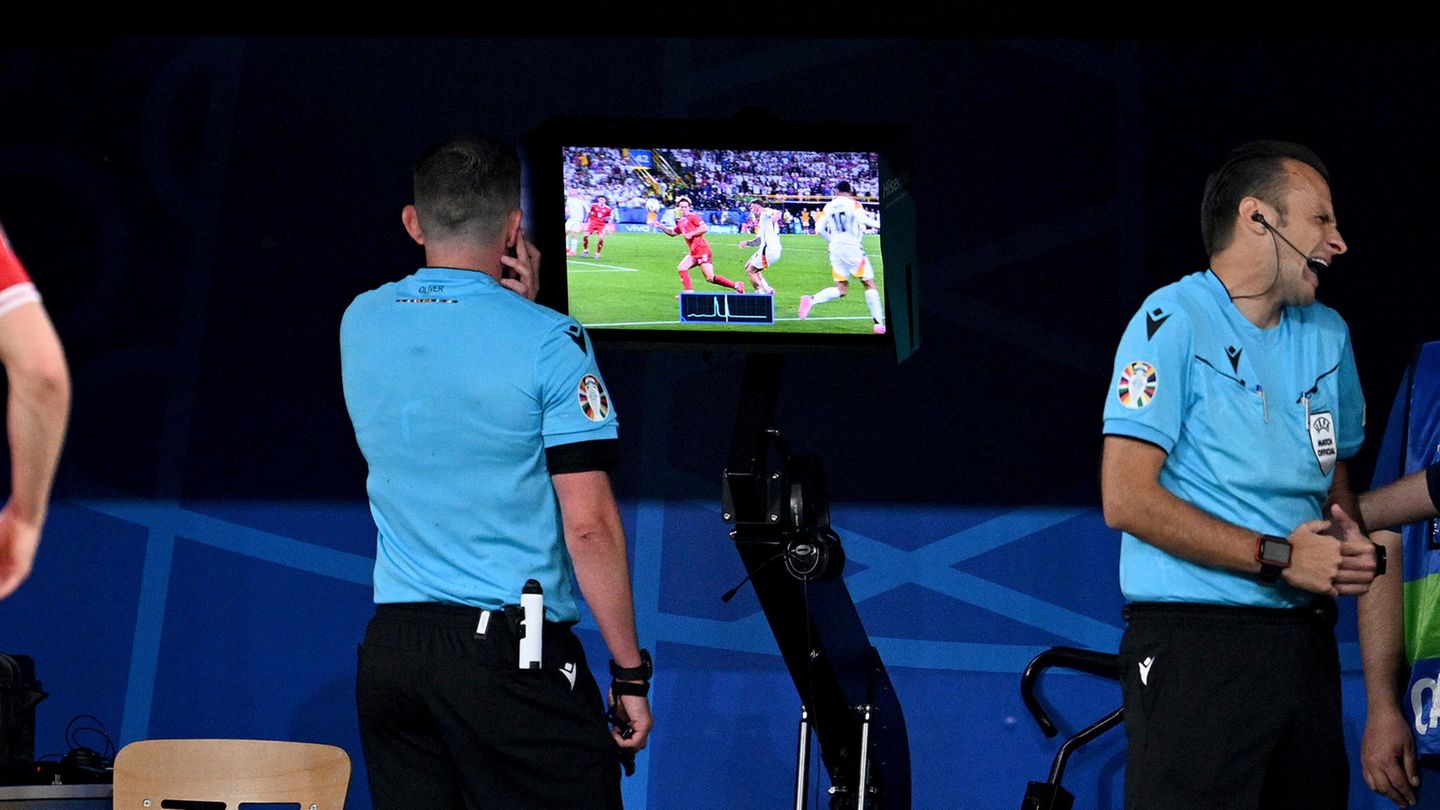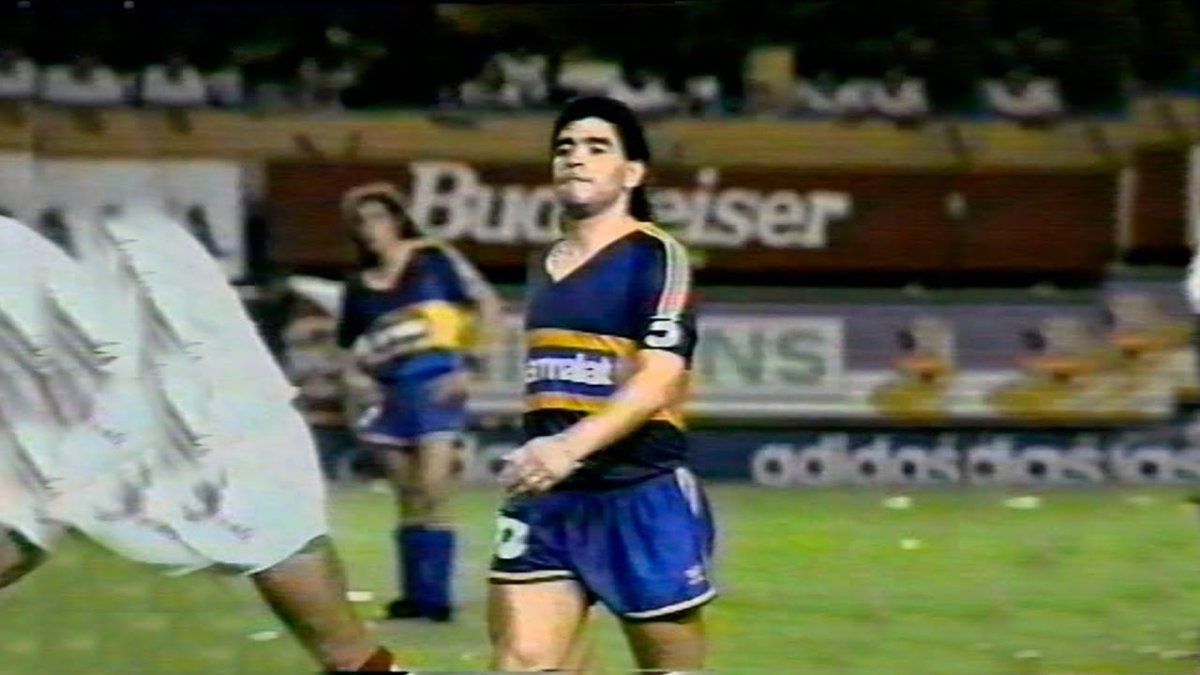Opinion
After controversial VAR decisions in the Denmark game, an absurd debate has broken out: football sees itself as being hijacked by computers. But they only make the game more transparent – if the technology is used correctly.
Sporting events become less important the further back they are, because nothing has the same impact as the live moment. Strangely, this law does not seem to apply to the round of 16 match between Germany and Denmark, played on Saturday evening. The further away the match recedes, the bigger it becomes.
The discussions surrounding this game have already moved miles away from the grass of the Dortmund stadium. The issues being discussed now are fundamental, and even the power of machines that allegedly ripped the soul out of football in that European Championship game.
Measuring football
These debates were sparked by two referee decisions. Both decisions were preceded by an intervention by the VAR, the Video Assistant Referee. The VAR provided data and images that in one case led to a goal being disallowed by the Dane Joachim Andersen, and in a second case proved that Andersen had handled the ball, which was sanctioned with a penalty for Germany.
Instead of leading 1-0, the Danes suddenly found themselves 0-1 down. Within just five minutes of the second half, the game had turned. Germany won 2-0.
In both disputed cases, computer-aided programs had measured the game with a millimeter ruler: In the first scene, Thomas Delaney’s toe protruded only a few centimeters into the forbidden offside zone. In the second, Andersen’s hand touched the ball minimally, as sensors built into the ball reported.
No reason for cultural pessimism
This brought a lot of critics to the fore: Could it really be that football, this impetuous and wild game, is judged so cold-heartedly? What is this nanotechnology doing on the pitch? Isn’t that against the nature of the game? Has artificial intelligence now finally taken over football?
These questions are justified, but to answer them in a culturally pessimistic way, as often happens, would miss the core of the problem. Because it is not the supposed independent life of VAR technology that is to blame for the wrong decisions in football – it is people.
2-0 win against Denmark
Musiala continues to whirl, Havertz uses the national coach’s trust – the German team in individual criticism
Nobody would probably think of calling for the abolition of X-ray machines just because a single broken bone has healed poorly. The weak point is not the X-ray image, but the doctor who, in his opinion, makes the wrong diagnosis. An X-ray image does not provide any recommendations on how to treat a fracture. Whether it needs to be splinted with a steel plate, whether a minimally invasive procedure would be advisable or whether a supportive cuff is sufficient – this is a decision that the doctor alone must make.
The overall circumstances must be taken into account
The same goes for a referee: a graphic is shown on the control monitor showing whether the hand was on the ball or not. However, a positive result does not necessarily lead to a penalty being awarded, as unfortunately happened against Denmark. It is the referee’s job to look at the overall circumstances of the incident: Did the player intentionally stretch his hand towards the ball? Was the player just shot at? And if so, did he have a chance to pull his hand back?
All of this has to be considered in the light of the computer-generated image. And referee Michael Oliver did not do any of this. He trusted the image alone. The Danes’ disappointment and anger at the penalty whistle for Germany were understandable.
The big toe also has no place in the offside area
The offside decision was different. Thomas Delaney’s big toe was in the forbidden zone, but a toe is also part of the body, so the decision was correct.
The traditionalists, who are loud in football, are now demanding that discretion be reserved and tolerant in such cases. But where does the tolerance range end when it comes to offside decisions? At three centimetres? At four? And should it suddenly stop at five? Five centimetres is just one centimetre more than four – how brutal, how executioner-like it would be to try to make everything dependent on just one centimetre! Let’s say six centimetres. Or seven?

Thunderstorm break and VAR drama in Germany’s victory – all highlights in the video
06:06 min
This line of argument could be continued indefinitely, and the conclusion from this thought experiment can only be that football should not make itself more naive than it is. It must remain open to new technologies. It must use all the tools that can make the game more transparent and fairer. But the people who use these tools must be better trained.
A photo of a handball only offers a two-dimensional truth. It is a frozen moment. But football is complex and dynamic. The basis for a decision to blow the whistle must be the big, moving picture, the assessment of all relevant circumstances.
A European Championship referee should know this. Michael Oliver, to the dismay of the Danes, did not. But that is not the fault of the apparatus that Oliver consulted.
Source: Stern
I am Pierce Boyd, a driven and ambitious professional working in the news industry. I have been writing for 24 Hours Worlds for over five years, specializing in sports section coverage. During my tenure at the publication, I have built an impressive portfolio of articles that has earned me a reputation as an experienced journalist and content creator.




